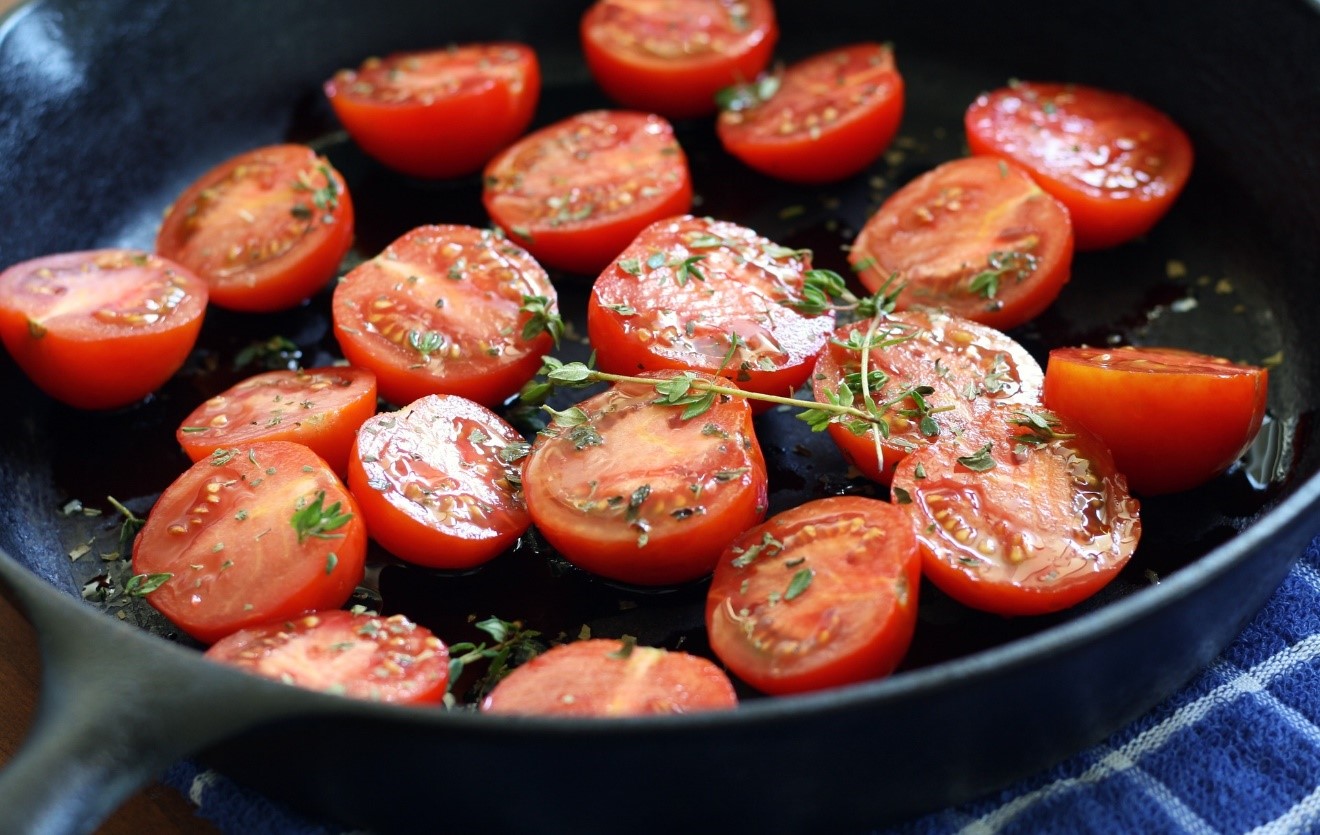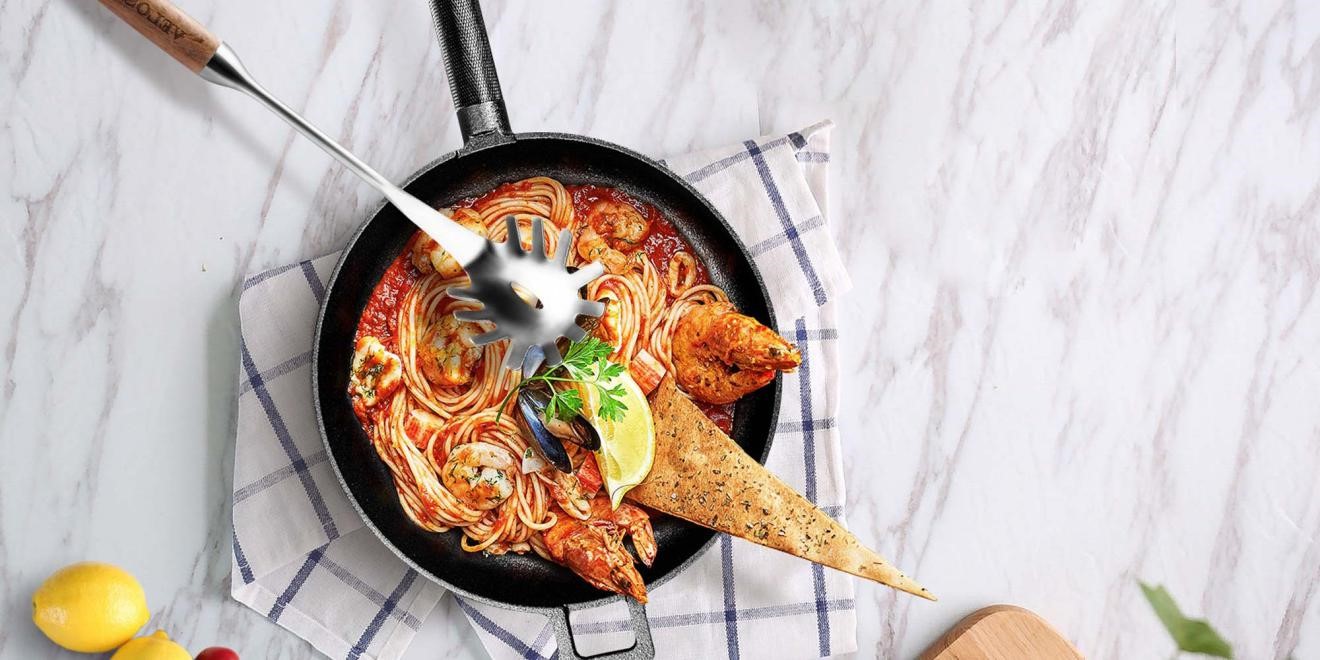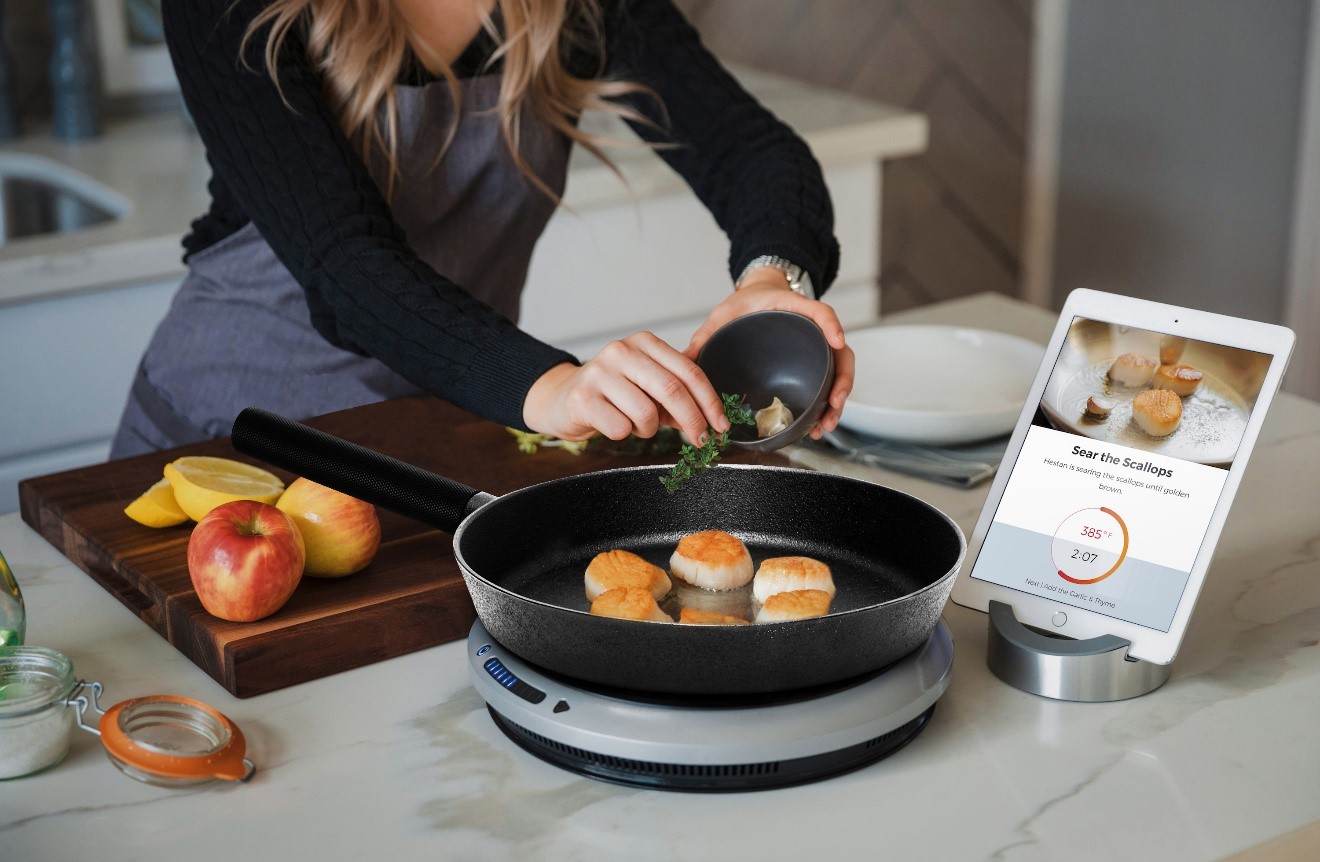Let’s play a game to break the ice: what’s your all-time favourite piece of kitchen equipment? That pan that you end up using every day almost as a habit. Exactly as quickly as when you pick up your favourite dress from the wardrobe first thing in the morning. In your kitchen, you might have piled up several types of cookware, your arsenal of choice in case you decide one day to start cooking Chickpea Shakshuka which is such a rare event that you will regret having spent most of your savings in such items. Don’t worry, it’s kind of normal.
But let’s imagine that for a twist of fate you have to choose one and one pan only. Which one would break into your heart? Which one would you bring with you on a desert island for years to come? Many experienced cooks will tell you that cast iron cookware is the kitchen superhero you should rely on. Cast iron has been used for more than 2000 years and is still present in most kitchens, regardless of age, gender, country, or generations. And that’s for more than a reason.

If you have ever searched “cast iron cleaning” or “cast iron seasoning” on Google, you are probably in a state of worry and confusion. Seas- what? If you find yourself postponing the burdensome task of cleaning or seasoning your cast iron pan, here’s a list of tricks that hopefully will go on for you:
- How to season:
Seasoning a new cast iron skillet can look like a very daunting task, especially if you are a beginner in the kitchen. It’s much easier than it sounds. Just pre-heat the oven at 325⁰F for half an hour. At the same time, wash the new or hand-me-down cast iron pan with water and dry it thoroughly. Then add a thin layer of shortening or oil and place the skillet on the medium rack of your oven for a couple of hours. Iron is a very porous material, so the layer of oil will fill in the pores and protect your pan from air, dust, and bacteria.
Pro tip: you’d better be careful when removing the pan from the oven since cast iron cookware is usually made of one single piece and cast iron is an excellent heat conductor. That’s to say that handles will remain hot for as long as the pan itself.

- How to cook:
Preheat your cast iron cookware before putting in your ingredients. Besides, cook over low heat. High temperatures can crack a cast iron pan and ruin its seasoning. It is best to use only wooden spoons since metal utensils can destroy the protective coating of your pan. You definitively don’t want to end up eating foods that taste as if you were licking iron bars. Even worse if you end up contaminating your dishes with rust or a rusty flavour.
Pro tip: if you want to fry eggs or pancakes, make sure to melt the oil or lard first.
- How to clean:
You made heavenly roasted chicken with crispy potatoes on your cast iron skillet. The dish got a ten out of ten from your hosts. But then, they leave, and you still have to do the dishes by yourself. Luckily, cleaning a cast iron pan requires intentional attention but will save you time compared to other non-stick cookware. What you need is coarse salt, a little bit of water, a washcloth, and quite some elbow grease. For even better results, you can consider adding a few tablespoons of baking soda. You can clean leftovers on your cast iron skillet by pouring one cup of coarse kosher salt into the still-warm skillet. Scour with a folded kitchen towel or a non-abrasive cloth. Wash the skillet with warm water and remove the food bites and salt. Never, under any circumstances, place your cast iron skillet in the dishwasher. And never, except knee pads for some circumstances, use soap to clean it.
Pro tip: you can substitute the washcloth with a potato sliced in half and rub it on the pan as you would do with your hands or a towel.

- How to store:
If you want to do your cast iron skillet and yourself a favour, keep your cast iron cookware away from water as much as possible. This includes not leaving your pan soaked in water or abandoned in the sink for extended periods of time. An unpleasant result is that your pan will get rusty as hell. You will have to either throw it away or (more likely) that’s what sends you to “How to season” without passing “Go.” Just to play safe, you can store your skillet in a cool and dry place.
Pro tip: if you have several cast iron skillets and need to stack them, place a towel in between the pans to absorb moisture and prevent scratching the seasoning.
Now that you’ve mastered all the secrets of cast iron cookware, you can focus on making your favourite dish without having to worry about the pan itself. This type of cookware gets better with time. The more you use it – especially if you often fry or stir food – the better your meals will taste. Health benefits also come with the package. Yes, cast iron cooking can provide your body with additional bits of iron, which will be directly released to your food.
Research from the World Health Organization (WHO) suggests that 80% of people in the world are iron deficient and that 30% of people have iron-deficiency anemia. Young women, vegetarians, and children are more prone to suffering from iron deficiency, which can result in lack of energies and a weakened immune system. You can reinforce the health benefits of cast iron by getting a high-quality cast iron cookware set from Velosan. All their cast iron skillets, frying pans, woks, casseroles are pre-seasoned with a natural layer of fat. No added chemicals for an outstandingly natural unstickiness. Pro tip, they’ve been making cast iron cookware since 1896, so they really know what they’re doing.
